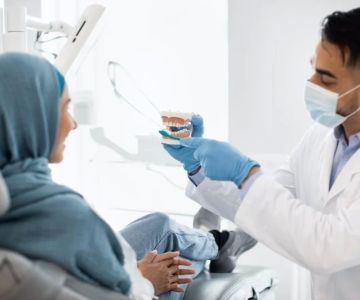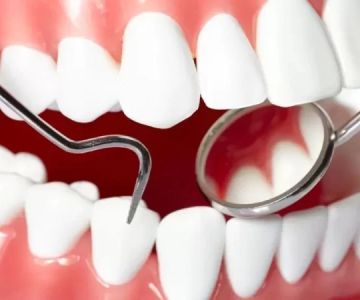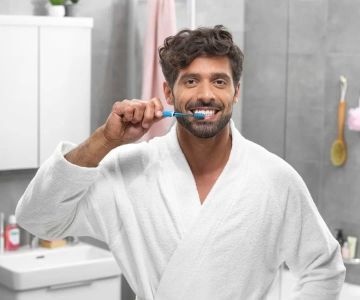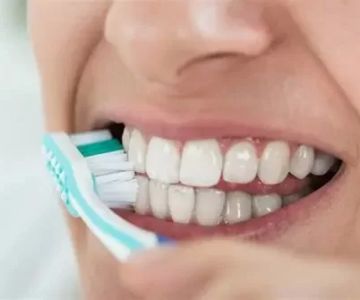Best Practices for Brushing Your Teeth
Maintaining excellent oral hygiene is crucial for overall health, and it begins with effective tooth brushing. Surprisingly, many people are not aware of the best practices for this everyday task. From choosing the right tools to the brushing technique, every step plays a significant role in promoting dental health. This guide will delve into essential practices that will make your brushing routine more efficient, as recommended by Dentistry Toothtruth.
Choosing the Right Toothbrush and Toothpaste
The first step in optimal tooth brushing is selecting the appropriate tools. A soft-bristled toothbrush is generally recommended by dentists because it minimizes the risk of damage to the gums and enamel. Moreover, choosing the right size of the brush is crucial, as it should comfortably fit in your mouth and reach all areas. According to the American Dental Association, replacing your toothbrush every three to four months, or sooner if the bristles are frayed, is essential for maintaining effective cleaning.
Toothpaste selection is equally important. Look for options with fluoride as it helps fight cavities and strengthens tooth enamel. Some people may require toothpaste for specific needs like sensitivity, whitening, or tartar control. Always check for ADA approval on your toothpaste, ensuring its effectiveness and safety.
Mastering the Correct Brushing Technique
Effectively brushing your teeth is not just about moving your toothbrush back and forth. The technique involves angling the brush at 45 degrees towards the gum line and using gentle, circular motions. This method helps clean each tooth surface while also taking care of the gums. According to the ADA, an ideal brushing session lasts for at least two minutes, though many people fall short of this time. It might be helpful to divide your mouth into quadrants and spend about 30 seconds on each to ensure thorough coverage.
Frequency and Timing of Brushing
Brushing twice daily is a standard recommendation for preventing plaque buildup and tooth decay. However, timing can significantly impact effectiveness. The Dentistry Toothtruth emphasizes brushing in the morning before breakfast to push back overnight bacterial growth, and at night before bed to clear food particles and plaque accumulated throughout the day. It's best to wait 30 minutes after eating to brush, especially after consuming acidic foods, to protect enamel from damage.
Supplemental Practices for Enhanced Oral Health
While tooth brushing is vital for oral health, combining it with other practices maximizes the benefits. Flossing at least once a day removes debris and plaque that brushing alone cannot reach, particularly between teeth and along the gum line. Using mouthwash can further reduce the risk of cavities and gum disease by killing bacteria and freshening breath. Regular dental check-ups are another integral part of a complete oral hygiene routine, helping identify and address issues before they become serious.
Common Mistakes in Tooth Brushing
Many individuals inadvertently make mistakes that could compromise their dental health. These include using a toothbrush with hard bristles, brushing too hard, or not brushing for the recommended duration. It's also common for people to neglect the tongue, which can harbor bacteria leading to bad breath. An awareness of these common errors and how to correct them can enhance the effectiveness of your daily oral care routine.
Conclusion
Adopting best practices for brushing your teeth is a fundamental step towards sustaining excellent oral health. From selecting the right brush and toothpaste to mastering technique and timing, each aspect plays an important part. By integrating these practices into your daily routine, alongside flossing and regular dental visits, you are investing in a lifetime of healthier teeth and gums. Start refining your oral hygiene habits today and experience the benefits of a healthier smile, guided by the insights from Dentistry Toothtruth.







 Dr. Sandra Villamil, DDS4.0 (21 review)
Dr. Sandra Villamil, DDS4.0 (21 review) Doc Bresler's Cavity Busters4.0 (363 review)
Doc Bresler's Cavity Busters4.0 (363 review) ProSmile Dentistry: Parisa Zarbafian DDS5.0 (29 review)
ProSmile Dentistry: Parisa Zarbafian DDS5.0 (29 review) Stratford Dental Center4.0 (43 review)
Stratford Dental Center4.0 (43 review) Dr. John M. Clifford, DDS0.0 (0 review)
Dr. John M. Clifford, DDS0.0 (0 review) Shawn McCarthy, DDS, MS0.0 (0 review)
Shawn McCarthy, DDS, MS0.0 (0 review) The Importance of Oral Health Education During Pregnancy for a Healthy Pregnancy
The Importance of Oral Health Education During Pregnancy for a Healthy Pregnancy Best Tips for Brushing Your Teeth Properly for Healthy Gums: Essential Techniques for Oral Health
Best Tips for Brushing Your Teeth Properly for Healthy Gums: Essential Techniques for Oral Health Why Skipping Dental Checkups Can Lead to Bigger Oral Health Problems
Why Skipping Dental Checkups Can Lead to Bigger Oral Health Problems Advantages of Porcelain Dental Restorations
Advantages of Porcelain Dental Restorations How Can Diabetes Cause Tooth and Gum Problems? Preventing and Managing Oral Health Issues
How Can Diabetes Cause Tooth and Gum Problems? Preventing and Managing Oral Health Issues Healthy Habits for Promoting Good Oral Health and Hygiene: Tips for a Healthy Smile
Healthy Habits for Promoting Good Oral Health and Hygiene: Tips for a Healthy Smile